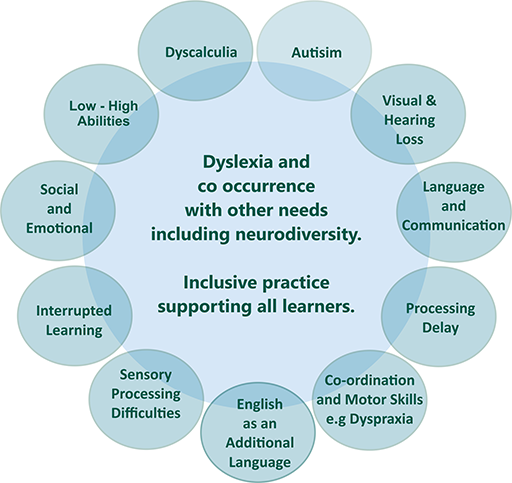2.4. The co-occurrence of dyslexia with other areas of additional support

Figure 6 Neurodiversity Overview
Show description|Hide descriptionThis image is a silhouette of a head facing left with a stylised design representing the brain with the text Neurodiversity written. It is positioned within a circle filled with the colour spectrum. Surrounding the head are the words Autism, ADHD, Dyscalculia, Dyslexia, Developmental Language Disorder, Foetal Alcohol Spectrum Disorder, Intellectual Disability and Tourettes and Tic Disorder.
The Scottish working definition of dyslexia is broad and does not only impact on the acquisition of literacy skills. The different characteristics involved with dyslexia are also found in a wide range of learner profiles and areas of additional support.

Show description|Hide descriptionA diagram to highlight that all learners - with and without Additional Support Needs - are effectively and successfully supported using learning and teaching strategies which focus on inclusive dyslexia-friendly approaches.
Ensuring that your curriculum is accessible and inclusive will support more pupils than just those who are dyslexic.
All learners − with and without additional support needs − are effectively supported using inclusive learning and teaching pedagogy based on inclusive dyslexia-friendly approaches.


